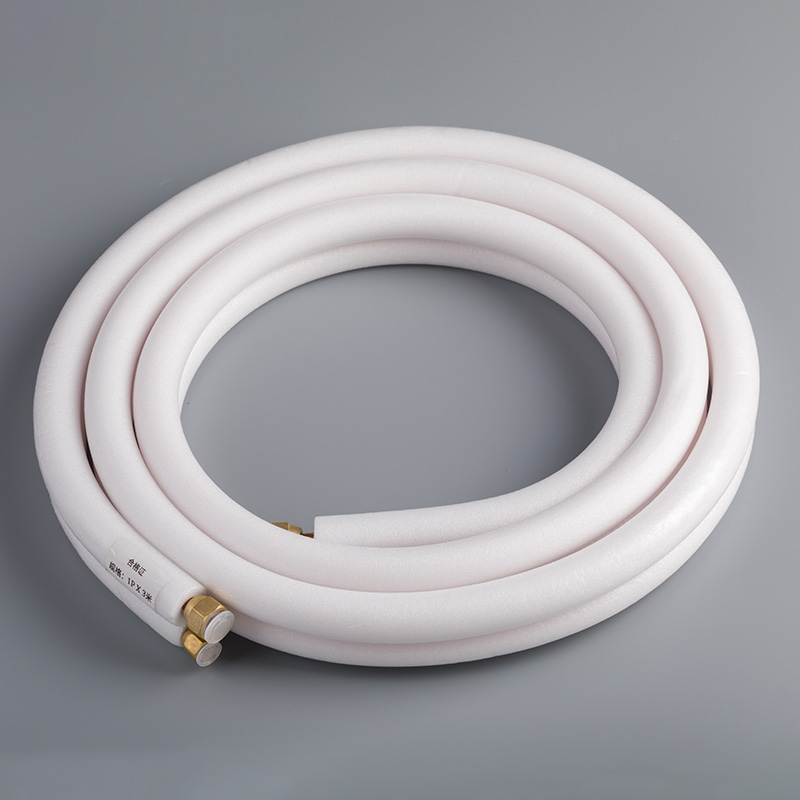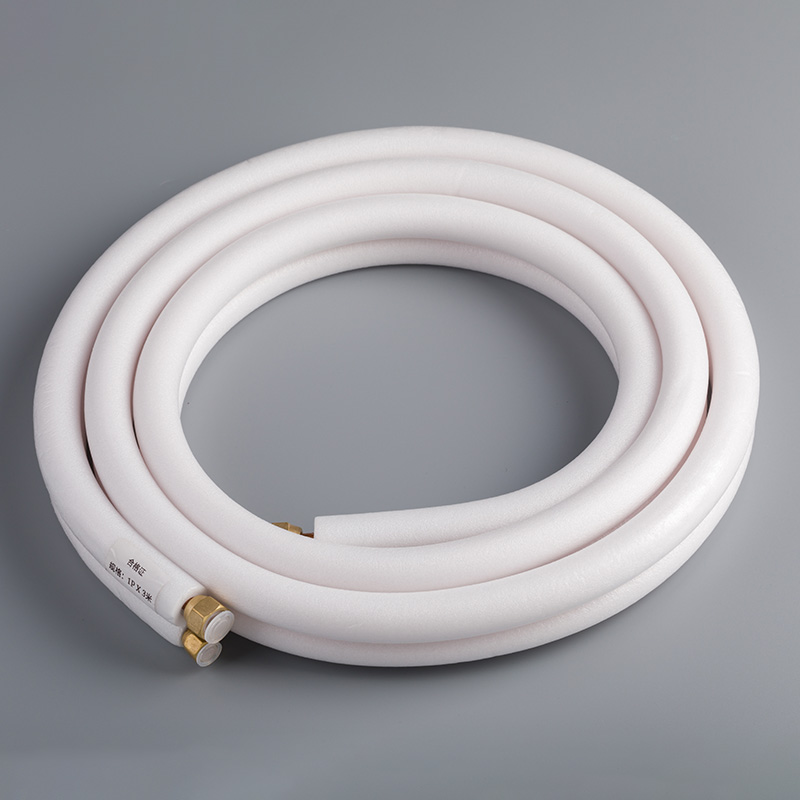Understanding Air Conditioning Insulation Materials

Insulation plays a critical role in enhancing the efficiency of air conditioning systems. Proper insulation minimizes energy loss, reduces utility costs, and ensures consistent indoor comfort. Common materials used for insulation include fiberglass, foam, mineral wool, and reflective systems. Each material offers unique properties that contribute to thermal resistance and energy savings. Selecting the right air conditioning insulation material can lower energy consumption by up to 20%, improve HVAC performance, and create a more sustainable environment.
Types of Air Conditioning Insulation Materials

Fiberglass Insulation
Properties of Fiberglass
Fiberglass consists of fine glass fibers that create a lightweight and durable material. The structure of fiberglass allows it to trap air, which enhances its thermal resistance. Fiberglass is available in various forms, including batts, rolls, rigid boards, and loose-fill insulation. The material provides excellent thermal performance and maintains stability over time.
Benefits and Drawbacks
Fiberglass insulation offers high thermal efficiency and affordability. The material resists fire and does not absorb moisture, making it suitable for air conditioning systems. However, fiberglass can irritate the skin and respiratory system during installation. Proper protective equipment is necessary to handle fiberglass safely.
Common Applications
Fiberglass is widely used in duct insulation and HVAC systems. The material is commonly applied in flexible ductwork and attics. Foil Faced Fiberglass Insulation Batts, such as those from Owens Corning, are popular for reducing energy consumption in walls, ceilings, and floors.
Foam Insulation
Types of Foam (e.g., Polyurethane, Polystyrene)
Foam insulation includes several types, such as polyurethane, polystyrene, and spray foam. Closed-cell foam and open-cell foam represent two primary categories. Closed-cell foam provides higher thermal resistance, while open-cell foam offers flexibility and soundproofing benefits.
Properties of Foam Insulation
Foam insulation delivers superior thermal resistance with low conductivity. Closed-cell foam prevents moisture accumulation, which reduces the risk of corrosion in air conditioning systems. Spray foam expands to fill gaps, ensuring a tight seal and improved energy efficiency.
Benefits and Drawbacks
Foam insulation provides excellent thermal resistance and moisture control. The material supports long-term performance and reduces energy loss. However, foam insulation often involves higher costs compared to other materials. Installation requires specialized equipment and expertise.
Common Applications
Foam insulation is frequently used in air conditioning systems to insulate copper pipes and ducts. Closed-cell elastomeric pipe insulation is a preferred choice for preventing condensation on AC lines. Spray foam is also applied in areas requiring airtight sealing.
Reflective Insulation
Properties of Reflective Insulation
Reflective insulation uses reflective materials, such as aluminum foil, to reduce heat transfer. The material reflects radiant heat away from surfaces, which lowers indoor temperatures. Reflective insulation often includes layers of polyethylene foam or bubble wrap for added thermal resistance.
Benefits and Drawbacks
Reflective insulation effectively reduces heat gain in warm climates. The material works well in combination with other insulation types for enhanced performance. However, reflective insulation requires proper installation to achieve optimal results. Dust accumulation on reflective surfaces can reduce efficiency over time.
Common Applications
Reflective insulation is commonly installed in attics to minimize heat transfer through roofs. The material is also used in duct insulation for air conditioning systems. Combining reflective insulation with fiberglass or foam enhances overall thermal performance.
Mineral Wool Insulation
Properties of Mineral Wool
Mineral wool is crafted from natural rock or industrial by-products, such as basalt or slag. The manufacturing process involves heating raw materials to high temperatures and spinning them into fibers. This structure creates a dense and durable material with excellent thermal and acoustic insulation properties. Mineral wool exhibits high resistance to heat and moisture, making it suitable for demanding environments. The material also maintains its performance over time without significant degradation.
Benefits and Drawbacks
Mineral wool provides superior fire resistance due to its non-combustible nature. The material effectively blocks heat transfer, enhancing energy efficiency in air conditioning systems. Moisture resistance prevents mold growth, ensuring long-term durability. However, mineral wool can be more expensive than other insulation options. Installation requires careful handling to avoid irritation caused by fine fibers.
Common Applications
Mineral wool is frequently used in HVAC systems to insulate ducts and pipes. The material is ideal for areas requiring fire-resistant insulation, such as mechanical rooms or industrial facilities. Mineral wool is also applied in air conditioning systems to improve thermal performance and reduce energy consumption. Combining mineral wool with other air conditioning insulation materials can further enhance efficiency.
Factors to Consider When Choosing Air Conditioning Insulation Materials
Thermal Resistance (R-Value)
Importance of R-Value
Thermal resistance, commonly referred to as R-value, determines the effectiveness of an insulation material in resisting heat flow. A higher R-value indicates better thermal performance. Proper R-value selection ensures efficient energy use and consistent indoor temperatures. Air conditioning systems with optimal insulation reduce energy consumption and improve overall performance.
How to Measure R-Value
R-value measurement involves assessing the material's thickness and thermal conductivity. Laboratory tests determine the ability of the material to resist heat transfer. Manufacturers provide R-value ratings for each air conditioning insulation material. Comparing these ratings helps identify materials suitable for specific applications.
Moisture Resistance
Importance in Air Conditioning Systems
Moisture resistance is essential for preventing condensation and mold growth in air conditioning systems. Insulation materials with poor moisture resistance can lead to system inefficiencies and structural damage. Proper moisture-resistant insulation protects ducts and pipes from corrosion and extends the lifespan of the system.
Materials with High Moisture Resistance
Closed-cell foam insulation offers excellent moisture resistance due to its impermeable structure. Mineral wool insulation also provides significant moisture resistance while maintaining thermal efficiency. Polyethylene foam, treated with fire-retardant chemicals, combines moisture resistance with safety features. Selecting materials with high moisture resistance ensures long-term durability and performance.
Fire Resistance
Safety Considerations
Fire resistance is a critical factor when choosing insulation materials for air conditioning systems. Materials with high fire resistance reduce the risk of fire hazards and enhance safety. Non-combustible insulation prevents the spread of flames in case of accidents. Proper fire-resistant insulation contributes to compliance with building safety standards.
Fire-Resistant Materials
Mineral wool insulation stands out for its exceptional fire resistance. The non-combustible nature of mineral wool makes it suitable for high-temperature environments. Fiberglass insulation also provides fire-resistant properties, ensuring safety in residential and commercial applications. Combining fire-resistant materials with proper installation techniques enhances system reliability.
Environmental Impact
Eco-Friendly Insulation Options
Eco-friendly insulation materials contribute to sustainable air conditioning systems. Manufacturers design these materials to minimize environmental harm during production and use. Mineral wool insulation serves as an eco-friendly option due to its composition of natural rock or recycled industrial by-products. The manufacturing process for mineral wool reduces waste and promotes resource efficiency.
Foam insulation, particularly closed-cell varieties, also offers eco-friendly benefits when treated with non-toxic chemicals. Polyethylene foam, enhanced with fire-retardant additives, combines safety with environmental responsibility. Fiberglass insulation, made from recycled glass, further supports sustainability goals. Selecting eco-friendly air conditioning insulation material enhances energy efficiency while reducing carbon footprints.
Recyclability and Sustainability
Recyclable insulation materials play a vital role in reducing landfill waste. Mineral wool insulation demonstrates high recyclability due to its durable and reusable fibers. This material maintains performance even after recycling, ensuring long-term sustainability. Fiberglass insulation also supports recyclability through its glass fiber composition, which can be repurposed for new insulation products.
Sustainable insulation materials prioritize renewable resources and low environmental impact. Closed-cell foam insulation, when responsibly manufactured, aligns with sustainability objectives. Reflective insulation, incorporating aluminum foil, promotes sustainability through its lightweight and recyclable properties. Choosing recyclable and sustainable air conditioning insulation material ensures responsible resource management and environmental preservation.
Installation and Maintenance Tips for Air Conditioning Insulation Materials

Proper Installation Techniques
Common Mistakes to Avoid
Improper installation of insulation often reduces efficiency and increases energy loss. Compressing insulation materials lowers their R-value, which diminishes thermal resistance. Gaps or voids in the insulation allow heat transfer and compromise system performance. Incorrect alignment of insulation around ducts or pipes leads to uneven coverage. Using incompatible materials with air conditioning systems may result in moisture buildup or corrosion. Avoiding these mistakes ensures optimal performance of any air conditioning insulation material.
Tools and Equipment Needed
Installing insulation requires specific tools to achieve precision and efficiency. Utility knives or insulation cutters provide clean cuts for materials like fiberglass or foam. Measuring tapes ensure accurate sizing to cover ducts and pipes completely. Staple guns secure insulation batts or rolls in place during installation. Adhesive sprays or tapes help seal gaps in reflective or foam insulation. Safety gear, including gloves, goggles, and masks, protects against irritation from fibers or chemicals. Proper tools streamline the process and improve the effectiveness of air conditioning insulation material.
Maintenance Best Practices
Regular Inspection and Upkeep
Routine inspections maintain the efficiency and longevity of insulation systems. Checking for signs of wear or damage prevents energy loss and system inefficiencies. Moisture accumulation on insulation indicates potential leaks or condensation issues. Dust or debris on reflective insulation reduces its ability to reflect radiant heat. Inspecting insulation for gaps or compression ensures consistent thermal resistance. Regular upkeep of air conditioning insulation material enhances performance and reduces long-term costs.
Signs of Wear and When to Replace
Recognizing wear in insulation materials helps determine replacement needs. Cracks or tears in foam insulation reduce its moisture resistance and thermal efficiency. Fiberglass insulation that appears flattened or compacted loses its R-value over time. Mineral wool showing signs of mold or deterioration requires immediate replacement. Reflective insulation with excessive dust or discoloration fails to perform effectively. Replacing worn-out air conditioning insulation material restores energy efficiency and system reliability.
Choosing the right air conditioning insulation material ensures energy efficiency and cost savings. Materials with high thermal resistance reduce energy consumption and minimize environmental impact. Eco-friendly options, such as mineral wool and cellulose, support sustainability by lowering carbon footprints. Balancing performance, affordability, and environmental benefits enhances long-term value. Professional consultation guarantees proper material selection and installation for optimal results.
See Also
Discover The Five Best Types Of Insulation Available
Enhance Air Conditioner Performance Using Copper Pipe Insulation
Essential Guide To Understanding Insulation Thickness Requirements


